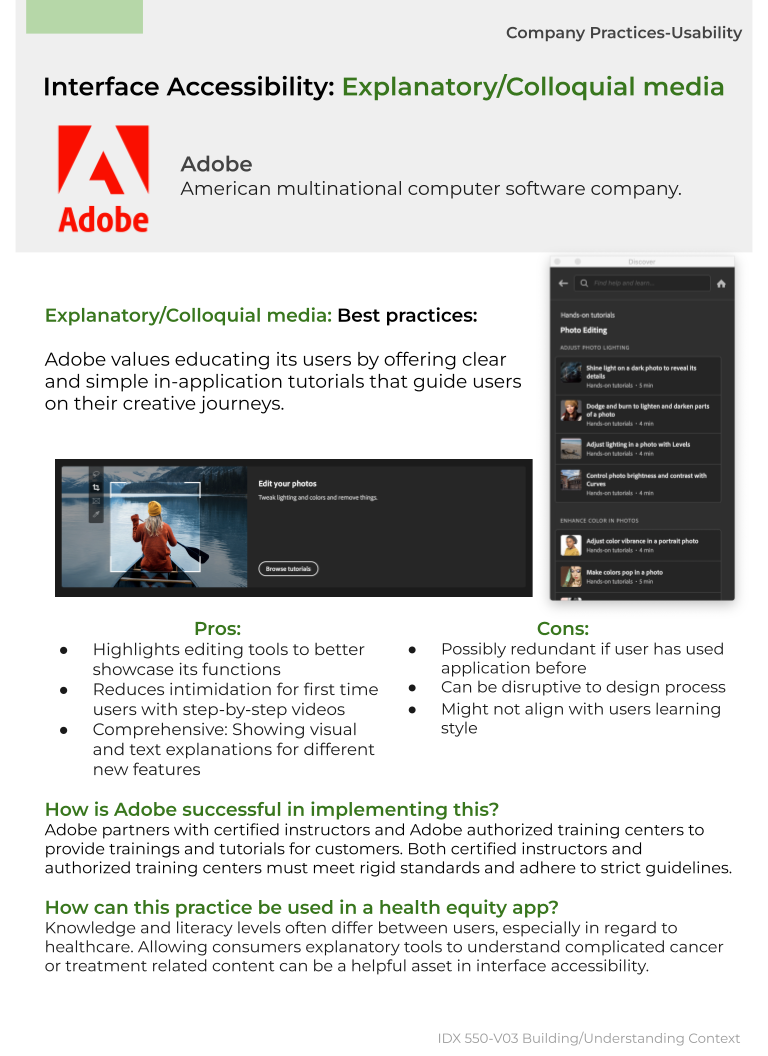Goal of the project: To build a framework for companies to use as reference when developing best practices for a healthy equity app.
Team members: Amy Zasadzinski, Victoria Williamson
My Role: secondary research and using the analysis from our research, synthesize the "carrot" analogy framework.
Our process: To build our framework, we studied and analyzed health equity trends and benchmarks in digital media to generate insights on the qualities and features that were important to develop an app that caters to the health and wellness of people of all races, cultures, abilities, and socio-economic backgrounds. We then went through several rounds of “Yes And…” brainstorm exercises to synthesize our research.
⬇︎
Our process was not linear. The case studies analysis informed the criteria and attributes we were looking for in a health equity app. We would iterate through this cycle several times to eventually choose ones that were MECE (mutually exclusive collectively exhaustive) enough. The criteria and attributes are then grouped into 3 main categories. We then dive deeper into the case studies that excel in these criteria and synthesize insights from these apps that could be used as benchmarks for the cancer monitoring and prevention app. Examples of benchmarks can be found below.
Summary of the best practices of a health equity app:
Usability: A health equity app needs to be appealing, purposeful, and technologically accessible for the language and sensory needs of all people.
Social Accessibility: A health equity app needs to cater to people with different socioeconomic backgrounds and levels of education/literacy of the health/medical topics in question.
Community: A health equity app needs to build a sense of connection between users and with the service provider, and grow the community to reach marginalized populations.
What happens if a part is missing?
End Result: The Framework
Usability:
Usability acts as the leaves of the carrot. Providing a functional, easy to use application that fits the needs of users that are often overlooked. Without usability, users would not be able to recognize the benefits from the application, just like without leaves, a carrot could not be spotted.
Social Accessibility:
Acting as the body of the carrot, Social Accessibility is the core of an equitable application, providing features that recognize and feed the needs of diverse users.
Community:
Community is represented by the roots of the carrot. The application should spread and reach into diverse communities by representing those communities and creating connections between users and with the service provider.
Examples of benchmark studies for the three main essential parts:



We found apps that excelled in the best practices for each of the 3 main essential parts of usability, social accessibility, and community. We analyzed the apps' pros and cons and studied how the apps are implementing best practices into their features. To take it to the next step, we included ideas that the health equity app could take from these benchmarks into their design to create an app that meets our definition of an equitable and inclusive health app.
Takeaway Worksheet
Our team created a worksheet with "How might we" prompts for the cancer research hospital to help guide their internal team to design this health equity app. It can be used for any organization who wishes to design equitable and inclusive services.